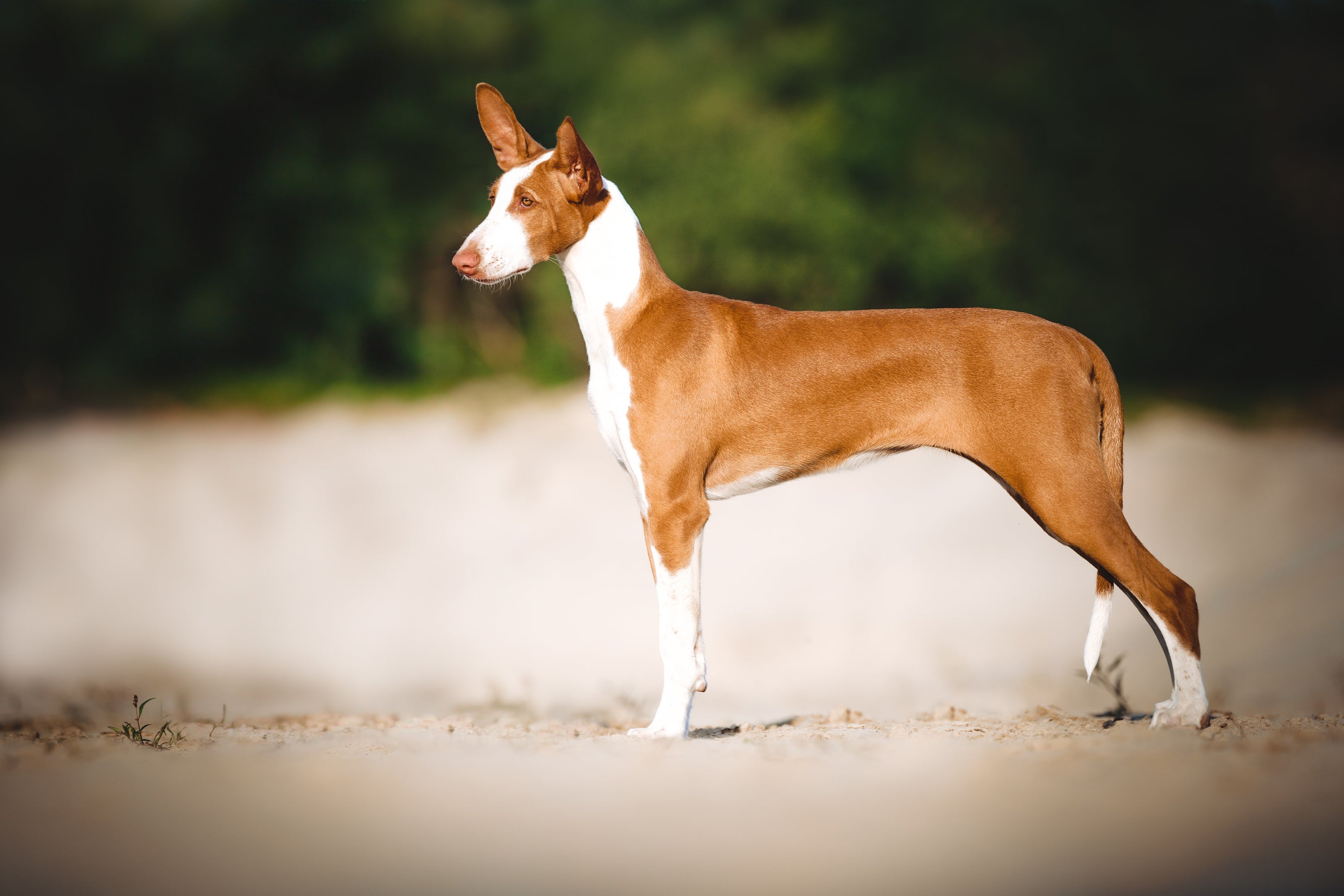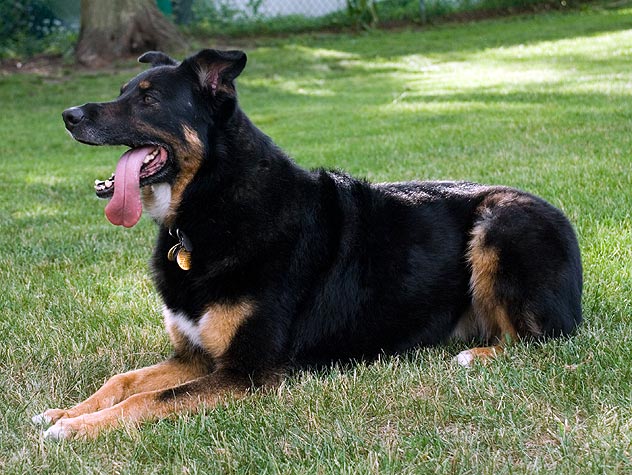Ibizan Hound
The Ibizan Hound dog looks deer-like, with an elegant and lithe body. They have a pace and amble gait, where both legs move together on the same side of the body similar to a horse’s trot. They possess great agility, endurance, and speed, having been bred to run across the Spanish island of Ibiza which has rugged terrain. Their coats can be short-haired or wire-haired, and can come in a variety of colors like white, bright red, and chestnut, or a rare fawn shade called “lion.”
Breed characteristics carousel
Learn More
Need to Know
- Dogs suitable for experienced owners
- Extra training required
- Generally healthy breed
- Enjoys active walks
- Large dog
- Minimal drool
- Requires frequent grooming
- Quiet dog
- Barks and alerts to visitors/anything unusual
- Generally friendly with other dogs
- May need additional training to live with other pets
- May need additional supervision to live with children
- Needs a large yard, either in suburban or rural areas
- Can be left alone occasionally with training
- AKC Registered Breed

Personality
Emotional and affectionate, the Ibizan Hound dog is loyal and devoted to its family. They can sometimes be aloof and independent with others. They will protest loudly about their dislike of being alone. Ideal owners will have plenty of room for them to run and jump.
The Ibizan Hound resembles dogs found on Egyptian artifacts as far back as 3,400 B.C. They were likely brought by Phoenician sailors to Ibiza in Spain in the 8th century B.C. The breed thrived on the isolated island thanks to their sharp eyesight, agility, speed, and ability to navigate the rocky terrain. The Ibizan Hound dog breed arrived in the United States in the 1950s.
If you have lots of land and don’t mind a lot of jumping and scent chasing, the Ibizan Hound is for you. They are funny, silly, and goofy dogs with distinct looks—owners shouldn’t mind answering constant questions about the breed. While not the easiest breed to train, Ibizan Hound dogs make up for it by loving a good snuggle with their owners.
Fast and active, the Ibizan Hound dog breed loves to exercise. Beware during off-leash running, their favorite activity—once they pick up sights or scents, they will run and keep going, paying little attention to you. Agile and athletic, they are known to jump very high. They do feel cold and hate the rain, so a coat is a good idea for leash walking or bad weather.
The Ibizan Hound dog doesn’t require a lot of indoor space. Just be prepared for them to hop up next to you and demand snuggles. They do better with access to land such as in suburban and rural areas, as city life might be too overwhelming. A secure yard with very high fencing will help keep these tall jumpers safe.
Whether short-haired or wired-haired, the Ibizan Hound is a cinch to groom. They have low-maintenance coats that can be brushed quickly.
The Ibizan Hound dog needs extra motivation to keep them engaged while training. Kind and thoughtful training methods with positive reinforcement will help, as they can be sensitive souls. Good recall is important, although it can’t always be relied upon given the dog’s instincts. It’s important to socialize Ibizan Hound puppies and dogs with people and other animals.
Older children are a good fit for the sensitive and high-energy Ibizan Hound dog. Smaller children or busy, noisy households are not the best fit.
The cost of an Ibizan Hound from a breeder is significantly more than the cost of adopting one from a local shelter or rescue. The adoption fee usually covers additional items such as spaying or neutering, vaccines, and microchipping.

Learn more about feeding and caring for your Ibizan Hound on Purina.
Did You Know?
- Ibizan Hounds have a pace and amble gait, which means their legs move together on the same side of the body.


